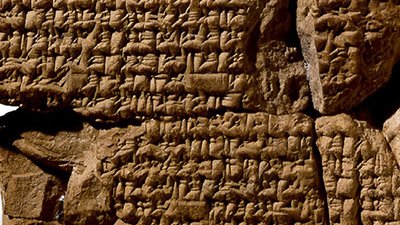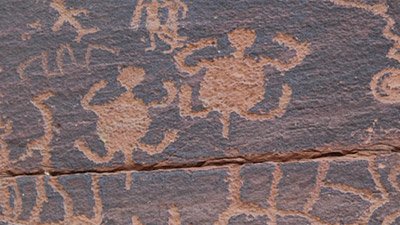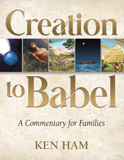
Was Lilith Adam’s First Wife?
Answering Claims About the Mythical Figure of Lilith
A prominent idea within secular culture is that the Bible has been edited and portions of text were taken out. One such example cited by feminists is the character of Lilith.
According to the story, Lilith was the first wife of Adam and was made from the dust of the earth like him. She claimed equal status with him and refused to lie under him because of it. Lilith fled the garden of Eden and refused to come back when three angels tried to persuade her to do so. She was then cursed to be the mother of demons and would seek to kill Adam’s sons. Adam, now having no wife, was given the more submissive Eve who would listen to and obey him.
Did Lilith Exist?
When we look at ancient sources, we find that Lilith does not have biblical origins but pagan ones. She was not written out of the Genesis account because this story never took place.
Some will claim that this story was taken out of the Genesis account in order to uphold male prominence and subjugate women to the desires of man. However, when we look at ancient sources, we find that Lilith does not have biblical origins but pagan ones. She was not written out of the Genesis account because this story never took place.
Lilith’s first literary appearance is in the Epic of Gilgamesh in a brief comment. She is one of the creatures Gilgamesh must flush out from the Huluppu Tree. No detailed description is given of her, and the tablet this story is found on is likely a later Babylonian edition to the tradition of Gilgamesh.1
The next ancient text Lilith is found in is in the Bible. Isaiah 34 and 35 are prophecies of the destruction of Edom. When Lilith is mentioned in Isaiah 34:14 (AMP, CEB, LEB, etc.), she is one of many creatures in a list, all of whom represent death, destruction, and evil.2 Most modern translations do not say “Lilith” but opt for general phrases like “night birds” or “screech owl.”
There are many textual issues with reading “lilith” as a proper noun though. First, all the creatures that are named before and after are plural, and it does not make stylistic sense to have a singular word in the midst of those plurals. Second, the tone of the text is hyperbolic in nature when describing the judgement of Edom.3 The original audience of the text would most likely have read “lilith” as representative of demonic creatures. Translations that use birds instead of Lilith are correctly communicating these ideas of desolation and ruin.
But even if this verse is to be taken as a reference to Lilith, it does not explain why there is a myth of her as Adam’s first wife.
Where Did the Lilith Myth Come From?
This myth originates in a Jewish work called The Alphabet of Ben Sira that was written sometime between the eighth and tenth century.4 The myth present in popular culture is derived from here; however, the nature of this work is rarely considered when people recount this story.
The Alphabet of Ben Sira is a satirical work whose purpose is to critique the rabbinical Judaism of the medieval age. The work is very vulgar and was not meant to be taken seriously. In fact, some of the contents have been deemed heretical, and various Jewish scholars have rejected it for these reasons.5
The myth of Lilith is just one of a set of stories that are used to answer questions Nebuchadnezzar asks seven-year-old Ben Sira. These stories are told as a “rewritten Bible.”
The insertion of Lilith has precedence in the Babylonian Talmud as she is described as a seductress, but it is difficult to determine what satirical purpose this narrative serves, especially since her focus is on the death of infants. One theory is that it may be critiquing the idea of a two-fold creation that was promoted by some rabbinical circles at the time. The more likely focus of the satire is not Lilith herself but Adam.
Rabbinical Judaism at the time put the blame of the fall solely on Eve with Adam having no culpability. However, in The Alphabet of Ben Sira, the men in the story are portrayed as weak and unable to exercise any greater authority over the woman.6 Adam blames God for giving him Lilith who will not listen to him, but later, he cannot stop Eve from eating the fruit and eating it himself.
While The Alphabet of Ben Sira is the source of this myth of Lilith being Adam’s first wife, no credence was given to this story until the modern era.
While The Alphabet of Ben Sira is the source of this myth of Lilith being Adam’s first wife, no credence was given to this story until the modern era. The next Jewish source to feature her, the mystical Zohar, does not give her the status of being Adam’s wife. She is the wife of the demon Samael, the evil counterpart to Adam, and she serves as the evil counterpart to Eve.7
The Zohar is a body of work that is associated with the Kabbalah and sought to bridge secular ideas with Jewish ones.8 Yet even it does not name Lilith as Adam’s first wife.
Conclusion
As the history of these documents is traced, it becomes more apparent that this idea of Lilith being Adam’s first wife has no biblical basis. In order to find a creation of a woman other than Eve, one must read Genesis 1 and 2 as separate events rather than as being two parts of the same account.
It is important that we analyze the sources from where we get our information. Many will say that Lilith was edited out of the Bible without knowing that her story comes from a medieval satire. But we can have confidence as we analyze these contentions against Scripture, that the Word of God will remain true and withstand whatever charge may come against it.
Footnotes
- Nicola Vulpe, “Irony and the Unity of the Gilgamesh Epic,” Journal of Near Eastern Studies 53 no. 4 (October 1994): 275, https://www.jstor.org/stable/545400.
- Ida Fröhlich, “Theology and Demonology in Qumran Texts,” Henoch 32, no. 1 (January 2010): 103.
- Otto Kaiser, Isaiah 13–39, trans. R. A. Wilson (Philadelphia: The Westminster Press, 1973): 359.
- Wojciech Kosior, “A Tale of Two Sisters: The Image of Eve in Early Rabbinic Literature and Its Influence on the Portrayal of Lilith in the Alphabet of Ben Sira,” Nashim: A Journal of Jewish Women’s Studies & Gender Issues, no. 32 (Spring 2018): 114, Google Scholar.
- Joseph Dan, “Ben Sira, Alphabet Of,” in Encyclopaedia Judaica (Detroit: Macmillan Reference, 2007): 375.
- Kosior, “A Tale of Two Sisters,” 115.
- Joseph Dan, “Samael, Lilith, and the Concept of Evil in Early Kabbalah,” AJS Review 5 (April 1980): 25.
- Oded Yisraeli, “Jewish Medieval Traditions Concerning the Origins of the Kabbalah,” Jewish Quarterly Review 106, no. 1 (Winter 2016): 41, Google Scholar.
Recommended Resources

Answers in Genesis is an apologetics ministry, dedicated to helping Christians defend their faith and proclaim the good news of Jesus Christ.
- Customer Service 800.778.3390
- © 2024 Answers in Genesis





